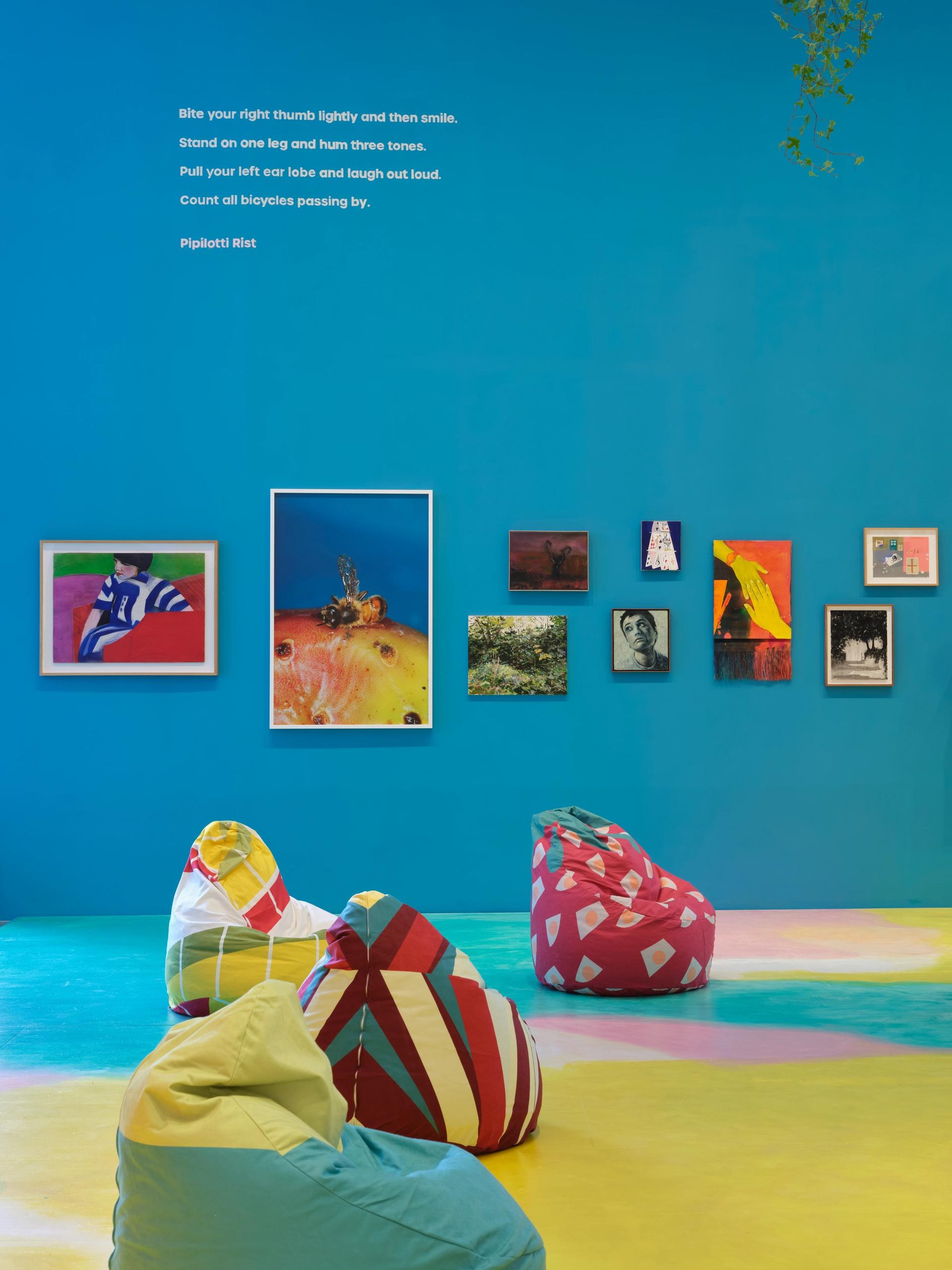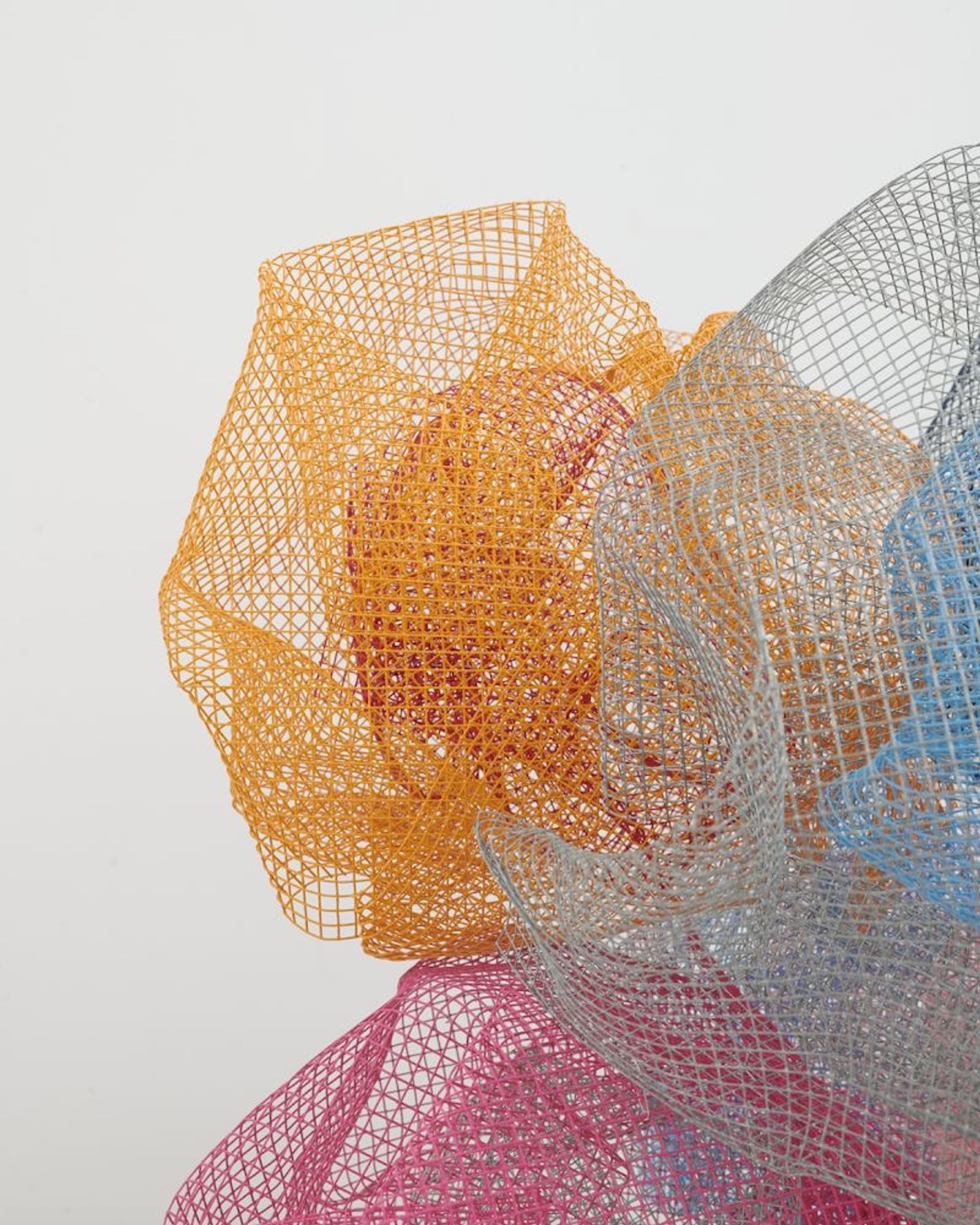
While it is perfectly common for the walls of Mayfair’s Hauser & Wirth to be adorned with various prized artworks, it is rather less so for them to be plastered with more than 2,000 sheets of A4 paper. And yet, as part of the gallery’s collaboration with mental health charity Hospital Rooms, that is exactly what has occurred.
Marking the culmination of a three-year partnership, Hospital Rooms and Hauser & Wirth recently launched Digital Art School, an immersive art-making experience focused on humanising mental health spaces. More broadly, it seeks to support people who experience severe mental illnesses (SMI) and those who care for them.
The show is the physical manifestation of art workshops delivered by Hospital Rooms at inpatient mental health facilities across England. The sheets of paper—most of them blank, some of them featuring drawings to inspire participants in the sessions—represent the hundreds of people reached by the project each week.
What are Hospital Rooms’ aims for the project?
“What we’ve always thought is that anyone who’s in an inpatient mental health facility deserves to experience extraordinary art, and to be able to express themselves creatively,” says Hospital Rooms’ co-founder, Tim A. Shaw. “Our materials boxes are full of several hundred pounds worth of art materials, and we’ve sent one to every one of the 750 inpatient mental health locations in the country.”
These boxes are dotted around the edges of the exhibition, filled with high quality paints, pens, pencils and paper, many of them donated to the project by fine art brands such as Winsor & Newton. The boxes have the feel of a luxury purchase—each is decorated by the Brooklyn-based artist José Parlá—a choice that was intended to bring joy and excitement to often unwelcoming spaces, where budgets and safety requirements can make such things scarce.

Bean bags represent hot air balloons—a symbol of freedom for one service user
Installation view of Hospital Rooms at Hauser and Wirth, ‘Digital Art School’ Exhibition, 2024. Photo © Hospital Rooms (Tim Bowditch)
To inspire experimentation when using these materials, participants were also given access to in-person and pre-recorded sessions delivered by more than 40 artists who, Shaw points out, any art school would be proud to host. Throughout the exhibition visitors of all ages and abilities will be able to try out these same sessions, after which their works on paper will join those already covering the gallery’s walls.
Who do Hospital Rooms support?
Organisers hope that the project will draw wider attention to the positive impact of making art without expectation or pressure—and to the number of people who could benefit from such an opportunity. In England during 2022/23, 3.58 million people—or just over 6% of the population—had contact with NHS-funded secondary mental health, learning disability or autism services. Of these, more than 90,000 were admitted to inpatient facilities. And the duration of their stays is increasing.
For visual artist and workshop leader Nengi Omuku, the role her work can play in the lives of those experiencing SMIs is clear. “The theme of the workshop was: what brings you joy?” Omuku recalls of a session she delivered in October of last year. “We were making work with textiles and one person made a hot air balloon. He said a hot air balloon is his picture of freedom—what it means to be free from the constraints of his mind and from all of the things that have brought him to this place.”
The service user in question asked Omuku if she would include hot air balloons in a mural she was creating on behalf of Hospital Rooms, and she immediately agreed. That mural, a brightly coloured skyscape, is now reimagined in huge scale across the floor of Digital Art School, with the service user’s all important hot air balloons represented by playfully decorated bean bags.

The exhibition’s works will be auctioned, both live and online, from 11-12 September
Rana Begum, No.1384 Mesh (detail), 2024. Image courtesy Rana Begum Studio
Elsewhere in the gallery, a 2023 illustration by sculptor and installation artist Do Ho Suh—best known for his to-scale fabric reconstructions of his former homes—sits alongside a billowing sculpture by Rana Begum, whose abstract works blur the boundaries of sculpture, painting and architecture. Alongside them are works by Susie Hamilton, Peter Liversidge, Sutapa Biswas, Martno Gamper and more.
Also occupying the walls are a series of “propositions”. These quotes, supplied by names including Harold Offeh and Julian Opie, are intended to “introduce some escapism, wonder or intrigue into someone’s day”. It is a concept that speaks to the heart of Hospital Rooms’ vision.
How did the charity come about?
Shaw and his co-founder Niamh White began their work with Hospital Rooms in 2016, with the aim of bringing art and creativity to people in mental health facilities. They have been commissioning artists to produce site-specific work in mental health facilities ever since.
The pair were inspired to take up their cause after a close friend was sectioned following a suicide attempt, and after a trip to see that friend in a mental health unit opened their eyes to a problem within these institutions.
“It was shocking how cold and sterile it was,” Shaw remembers. “The staff in these mental health units do a very difficult and absolutely incredible job—they care for people. But the spaces, they don’t care for people.”
- Digital Art School is at Hauser & Wirth, London, until 10 September. The exhibition’s works will be auctioned online between 11 and 12 September. A live auction will also take place at 5pm on 11 September











